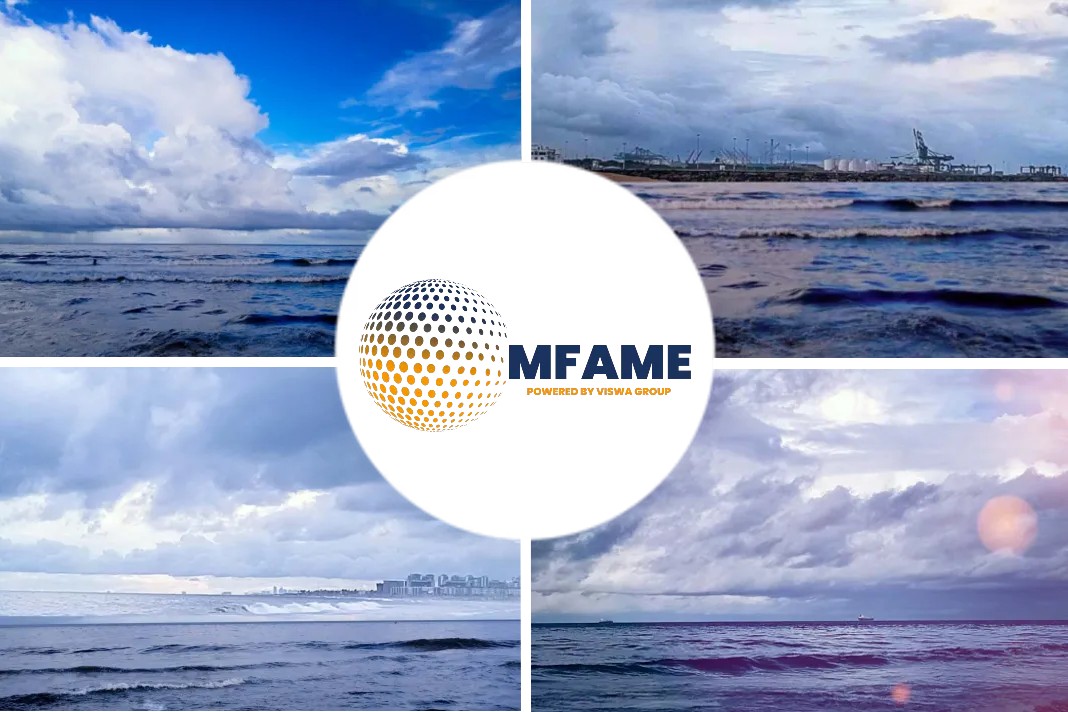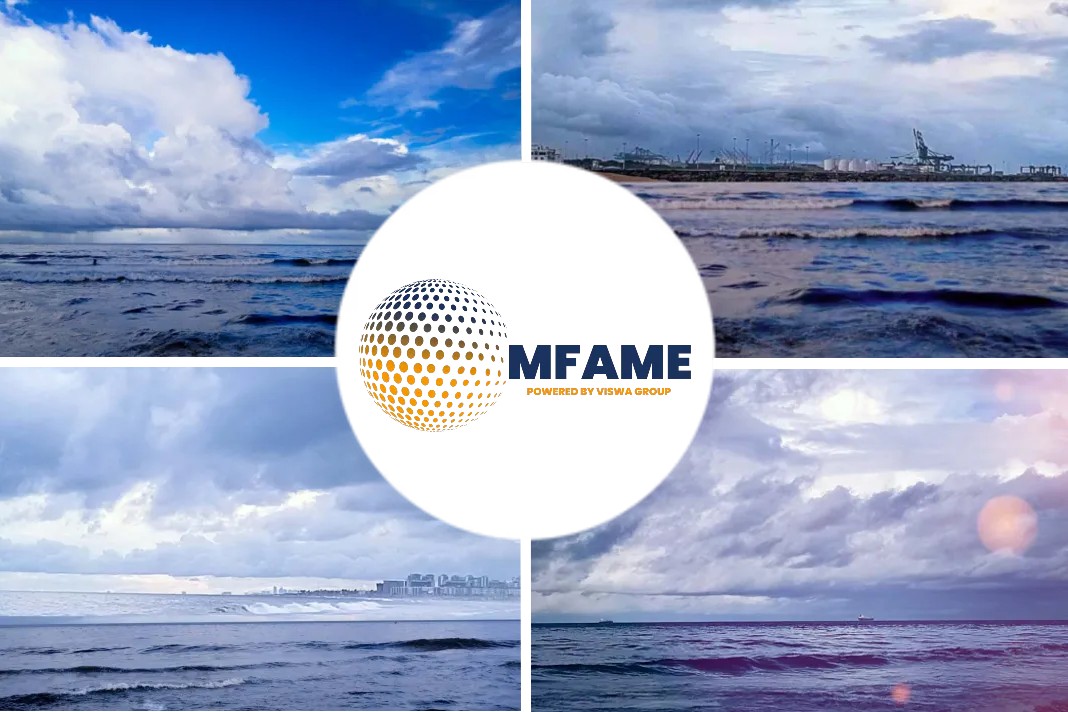- The best fleet in the drybulk segment, outperforming peers in terms of rates while keeping a low cash breakeven.
- Bullish supply/demand outlook for the next years in the drybulk market.
- Full alignment of interests, as founders and management are the largest shareholders.
- Free cash flow paid monthly as dividends and cash distributions.
One of the things that makes the writer love shipping is that is such a hated sector that sometimes you have the chance of picking up real diamonds at bargain prices, Seeking Alpha.
2020 Bulkers
Today the writer is going to talk about a company that even if it trades at around 1.2x NAV offers a great potential return with a good risk/reward ratio according to his experience.
2020 Bulkers, which trades in the Oslo Stock Exchange under the symbol 2020, is the owner and operator of eight modern, fuel-efficient 208,000 DWT Newcastlemax dry bulk sister vessels delivered by New Times Shipyard between August 2019 and June 2020 (2 of them under sale and leaseback agreements).
The company is focused on iron ore transportation. Newcastlemax global trade patterns in 2020 are shown below, being Australia and Brazil the largest producers of iron ore and being China and Japan the largest importers.
2020 Bulkers has a solid financial structure with moderate financial leverage, a substantial cash position and low operating cash breakeven, at around US$14,400 per day for 2021. The company estimates 12-month time charter rates for a scrubber fitted Newcastlemax of around US$25,000 per day considering the current FFA curve for 2021.
Before digging deeper into the company, let’s explore the drybulk market.
 Market overview and competitive positioning
Market overview and competitive positioning
The drybulk market has had the stronger start of the year since 2010 despite being the seasonally weakest part of the year. As in every commoditized market, rates depend exclusively on supply and demand.
Let’s look at the supply side. The current order book is at the lowest level ever. We have to get back to 2002 to see similar levels, and it was precisely at that time when the last supercycle started. Furthermore, we are seeing the oldest part of the fleet being scrapped, which creates the perfect setup for a run if demand does not decrease.
Visibility for the supply growth for the coming years is even more certain as most relevant shipyards have sold out their capacity for constructing Newcastlemax vessels up until mid-2022.Now let’s look at the demand side. Iron ore demand has been following an upward trend, as it is shown below.
Steel production is recovering beyond pre Covid-19 levels, and it is expected to grow even further due to governments’ efforts in reactivating the economy.
Strong demand in China
China, which is the greatest iron ore importer (around 70% share of total imports), is showing strong demand, while inventories are low in comparison with last years. The current inventories represent 31 days of consumption, down from 33 days at the same time last year.
On the other hand, the surge in iron ore prices to 7-year highs incentivizes production.
Iron ore set to average $100 a tonne for the first time since 2013.
In conclusion, assuming no major setback in global economies, there are strong reasons to expect modest growth coming from the demand side.
In addition to a bullish supply/demand setup, new environmental regulations are creating a competitive advantage for fuel-efficient newbuild eco ships, like those operated by 2020 Bulkers, which are estimated to be 38% more carbon emission effective per ton-mile compared to a standard Capesize vessel.
Capital Allocation
One of the best characteristics of 2020 Bulkers is that there will be no surprises in terms of capital allocation, which is not often the case in the shipping world: the company is focused on distributing free cash flow to shareholders as dividends and cash distributions.
The writer highly recommends watching this interview to the CEO to better understand the management approach to the business.
This video has only 234 views, and it’s representative of how under-looked this company is.
Free float and Insider ownership
The market cap is around 217 MUSD at the time of writing, and around 85% is held by institutions, leaving a free float of only 32.5 MUSD, which the writer thinks is the main reason for the stock mispricing.
The next figure shows the list of the main shareholders as of December 31, 2020.
The CEO, through MH Capital, owns c.6% of the company. The writer thinks that it is worth mentioning that Tor Olav Troim, Chairman of Golar LNG (GLNG) and a relevant person in the shipping world, owns as well c. 1% of 2020 Bulkers.
Valuation
The writer’s value approach this company is only focused on potential dividends for the next four years, as it has been conceived as a “cash cow”. Future rates are uncertain but following the Company’s indications, it is easy to model the potential distribution capability and test different scenarios. To start with, he’ll take Cleaves’ estimates.
According to Cleaves’ rate estimates above, the company’s potential distributions would be the following, based on March 19th closing price:
In conclusion, we are talking about a 130% return in four years only considering dividend distributions without any reinvestment, which corresponds to an average return of 32.5%. Needless to say, that if these rates estimates end up being true, an additional share price appreciation would be likely.
Now, if we want to adopt a more conservative approach and take the consensus estimates about forward rates, we would still be talking of a more than 80% return in four years, again only considering dividends distributed.
The writer personally thinks that given the supply/demand balance for the next years, these estimates may turn to be excessively conservative, but it is always a good idea to be prudent, especially when investing in shipping.
Risks
As in every shipping company, the most significant risk is the cyclicality of the dry market. We have to keep in mind that in an operationally and financially leveraged business, if rates go down losses occur really fast. And rates are only determined by supply/demand balance.
Even if the near future outlook gives us reasons to be optimistic, the risk of an economic downturn is non-negligible.
Concerning the financial risk, the company currently has approximately US$230 million of net debt, corresponding to approximately US$29 million per ship and a cash position of approximately US$20 million as of January 2021. Considering that the company is going to earn in excess of US$40 million this year, and that the next years are expected to be stronger in terms of rates, I think that the situation is well under control.
Another risk that is worth to mention in this type of business is counterparty risk, but in this case, charterers are Koch and Glencore that are unlikely to have any solvency problems.
Finally, the risk of management acting pro-cyclically, i.e. buying ships at the top, diluting at the lows is really low as incentives are aligned, and as one can see in the video above, the CEO knows exactly what he is doing.
Conclusion
The writer does not have any doubt that the only reason for this company trading so cheap with respect to its potential dividend distribution for the next year is that it is so small and unknown, thus enhancing a great opportunity for individual investors.
Did you subscribe to our daily newsletter?
It’s Free! Click here to Subscribe!
Source: Seeking Alpha
























